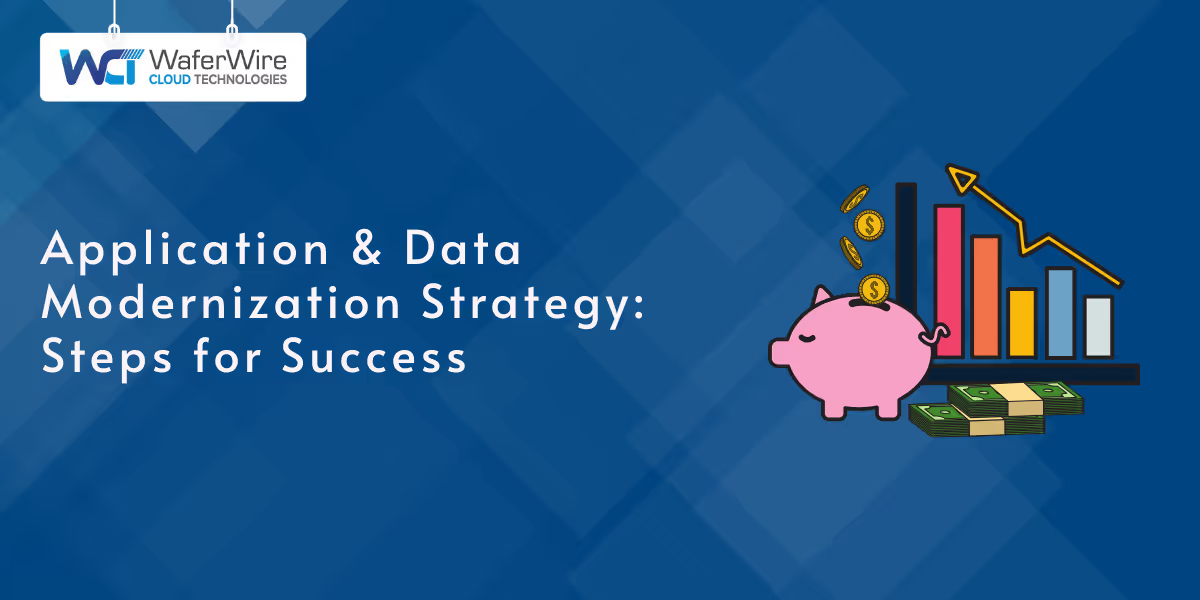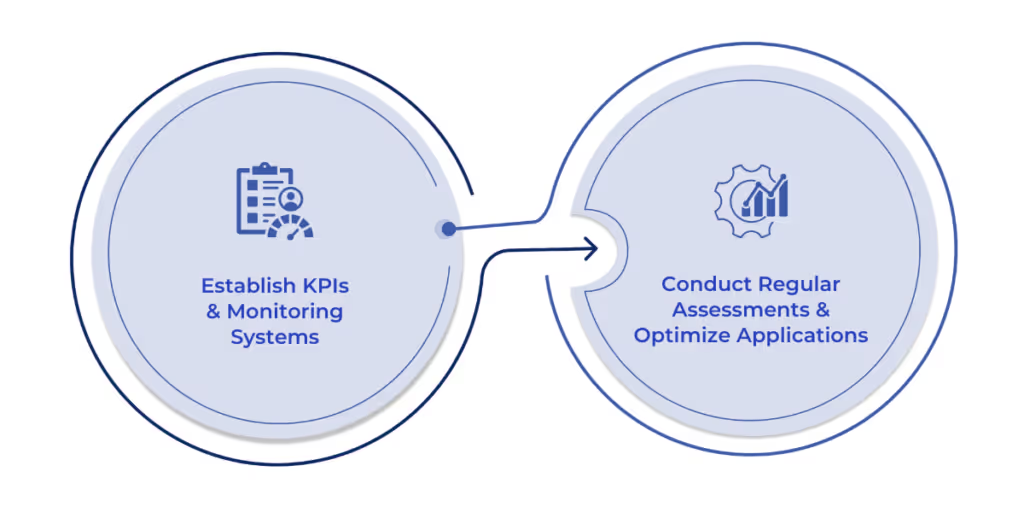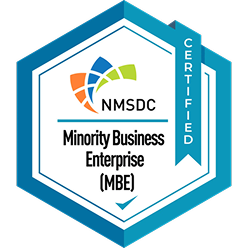

An essential part of today’s technological evolution involves refining and reimagining applications and data systems to better serve today’s businesses’ demands. A well-crafted modernization application and data strategy can drive performance improvements, improve security, reduce operational costs, and ensure systems remain agile and capable of meeting ever-changing business needs. However, skipping key steps in the modernization journey can lead to missed opportunities, prolonged cycles of updates and bug fixes, or even the loss of valuable users and revenue.
This article explores the essential steps for successfully modernizing your applications and data, ensuring your business remains competitive, efficient, and prepared for the future.
Application modernization involves updating and improving existing software applications to meet current business needs and technology standards. This process may include migrating legacy systems to new platforms, redesigning user interfaces, optimizing performance, and enhancing security features. The primary objective is to ensure applications remain reliable, secure, cost-effective, and capable of supporting evolving business requirements.
Similarly, data modernization focuses on updating and transforming data systems, infrastructure, and practices to enhance accessibility, usability, and value. This involves migrating data from siloed legacy databases to cloud platforms, improving data governance, enhancing security protocols, and ensuring wider access to trusted data across the organization. Effective data modernization helps overcome data silos, improves data quality, and establishes a foundation for advanced analytics and business intelligence.
A successful modernization initiative requires more than technological updates; it demands a strategic, well-planned approach that comprehensively aligns with business objectives and addresses organizational needs. Developing an effective modernization application and data strategy involves several critical considerations:
Clear alignment with business goals and objectives ensures modernization efforts deliver tangible value and address specific organizational challenges.
Adopting a strategic approach to modernization can transform organizations' technological capabilities. This approach minimizes disruption to ongoing operations and maximizes return on investment.
In the subsequent sections, we will examine the key steps and best practices for effective application and data modernization. This will offer organizations a framework to traverse this intricate yet vital transformation journey successfully.
A well-executed data modernization application and data strategy can drastically improve the accessibility, usability, and overall value of data across the business.
The first step in the data modernization journey is to evaluate and integrate disparate data sources. Often, data resides in siloed systems across various departments and platforms. To unlock the full potential of your data, it's essential to bring these disparate sources together in a unified system. Integrating data into a cohesive environment enables businesses to access and analyze information more efficiently, reducing data fragmentation and improving data-driven decision-making.
The next step in the modernization of application and data strategy is transitioning to modern data architectures. Moving away from outdated on-premises systems to cloud-based platforms, such as cloud storage and modern data lakes, helps businesses manage vast amounts of data flexibly. By leveraging these new architectures, companies can scale their data systems dynamically, ensuring they stay ahead of increasing data storage demands and real-time analytics requirements.
Lastly, implementing effective data governance and management practices is crucial for any successful modernization project. This includes establishing data quality, security, and compliance frameworks to ensure data remains trustworthy and accessible across the organization. A solid governance strategy ensures that all data is well-organized, secure, compliant, and easy to manage.
When embarking on data modernization, choosing the right approach is key to success. Let’s explore how to assess different strategies and select the best fit for your organization’s needs.
The modernization application and data strategy should focus on technical upgrades and ensure that modernization efforts align with broader organizational goals.
First, organizations must decide between strategies like rehosting, refactoring, and rearchitecting. Each approach offers distinct advantages. Rehosting, often called “lift and shift,” involves moving applications to a cloud environment with minimal changes. It’s a great option when quick migration is necessary.
Refactoring goes a step further by optimizing code to fully leverage cloud-native capabilities. This method balances time and cost, making it ideal for applications that need improvement but cannot be fully reengineered.
Rearchitecting is the most involved approach. It involves completely overhauling the application's architecture to transform it to meet modern business needs. This strategy is best for long-term scalability but can be more resource-intensive.
The modernization application and data strategy also require leveraging cloud-native tools and platforms for scalability and flexibility. With cloud technologies, you can take advantage of their scalable, cost-efficient resources. Tools like Kubernetes Azure provide the flexibility needed to manage large-scale workloads and future-proof your business infrastructure. These platforms also support continuous integration and continuous delivery (CI/CD) pipelines, making it easier to consistently roll out updates and improvements.
Finally, incorporating DevOps and Agile practices into the modernization process is crucial for improved efficiency and faster time to market. By promoting collaboration between development and operations teams, these practices enable rapid, iterative changes that adapt to evolving business requirements. DevOps helps automate repetitive tasks, freeing up teams to focus on more valuable activities. Agile, on the other hand, emphasizes incremental progress through sprints, ensuring that modernization is continuous and adaptable.
Having chosen the right approach, let’s now examine how new technologies can be leveraged to maximize the benefits of your modernization strategy.
Advanced technologies such as artificial intelligence (AI), machine learning (ML), and automation are essential for staying competitive. These technologies enhance efficiency, improve decision-making, and unlock new capabilities that transform how businesses operate and deliver value to customers.
AI and ML are game-changers in any modernization application and data strategy. By embedding AI models into business processes, businesses can automate repetitive tasks, derive insights from vast datasets, and personalize customer experiences. For example, ML-powered predictive analytics can help companies forecast trends, optimize inventory, and enhance customer engagement. Similarly, automation reduces manual work, increasing operational efficiency and allowing teams to focus on high-value tasks.
With Fabric’s serverless consumption-based model, AI and ML tools are more accessible to organizations of all sizes, from large enterprises to small businesses, without significant upfront costs.
Incorporating modern architectural approaches like APIs, microservices, and containerization can greatly enhance applications’ agility and scalability. APIs (Application Programming Interfaces) allow seamless communication between various applications and systems, making integration simpler and more efficient.
Conversely, microservices break down large, monolithic applications into smaller, more manageable components. This modular approach enables businesses to scale individual elements as needed, improving performance and flexibility.
Containerization further complements these practices by packaging applications and their dependencies into containers, which can be deployed consistently across different environments. This ensures that applications run smoothly regardless of where they are hosted, whether on-premises or in the cloud.
As businesses embrace new technologies, ensuring security and compliance with modern standards becomes paramount. Any modernization application and data strategy must include a robust security framework. This includes implementing encryption protocols, multi-factor authentication, and adhering to industry-specific regulations such as GDPR or HIPAA.
By utilizing cloud-based technologies and services that comply with global standards, businesses can ensure their systems remain secure while complying with evolving data protection laws. Microsoft’s cloud services, including Azure, offer built-in security features and tools that help prevent data breaches and unauthorized access.
As you adopt these advanced technologies, proper training and change management are critical to maximizing their impact and smoothing the transition for your teams.
With a well-supported, well-trained workforce, your organization can seamlessly adopt new systems and maximize their potential. A collaborative and learning-driven culture will ensure that your modernization strategy is successful and sustainable in the long term.
As your organization transitions to modern technologies, continuous training ensures employees remain proficient with new tools. Offering accessible training programs, whether workshops, webinars, or e-learning, helps employees stay updated and aligned with the latest systems. Regular support, including help desks and troubleshooting sessions, makes it easier for teams to adapt. This combination minimizes disruptions and maximizes the impact of your modernization application and data strategy.
A strong culture of collaboration fosters ownership of modernization initiatives. By encouraging cross-departmental engagement, employees will understand how their work contributes to the broader success of the modernization strategy. Promoting learning within the workplace helps boost engagement and drives innovation. When employees feel empowered to bring forward ideas, it accelerates the effectiveness of your strategy and keeps the business agile and competitive.
Continuously measuring success and driving improvements is essential to keep your modernization strategy aligned with business goals as your teams evolve.

Regular monitoring ensures systems stay optimized and aligned with business goals. Key Performance Indicators (KPIs) are essential for tracking progress and identifying areas for continuous improvement.
Defining clear KPIs is the first step to success. These should reflect operational and financial outcomes like system performance, user adoption, and cost efficiency. By implementing real-time monitoring systems, businesses can identify issues promptly and adjust resource usage to maintain optimal functionality.
Modernization is an ongoing process. Regular assessments are necessary to ensure systems evolve alongside business needs. Reviewing performance data allows businesses to pinpoint bottlenecks, improve security, and streamline workflows.
Companies can fine-tune features, update interfaces, and enhance performance using insights from KPIs. Continuous optimization ensures systems remain scalable, adaptable, and ready for future demands.
As businesses evolve in a digital-first world, modernization becomes more than just a trend—it’s a vital strategy for longevity. A well-executed modernization application and data strategy is the backbone for future-proofing your business, ensuring systems, processes, and technology adapt seamlessly to meet current demands and future opportunities.
But here’s the thing: modernization isn’t a singular event or a set-it-and-forget-it solution. It’s an ongoing commitment to refining, optimizing, and continuously aligning your technology with the ever-changing landscape of business needs. Setting clear KPIs, monitoring progress, and making data-driven decisions aren’t just best practices; they are essentials for navigating this journey.
At WaferWire, we understand that. Modernization is about more than infrastructure; it’s about empowering businesses to become nimble, efficient, and forward-thinking. With the right strategies, your business can stay competitive, efficient, and, most importantly, adaptable to change.
If you’re ready to take the next step in digital transformation, let us guide you. Together, we can create a thorough modernization application and data strategy that keeps you ahead of the competition. Contact us today!

